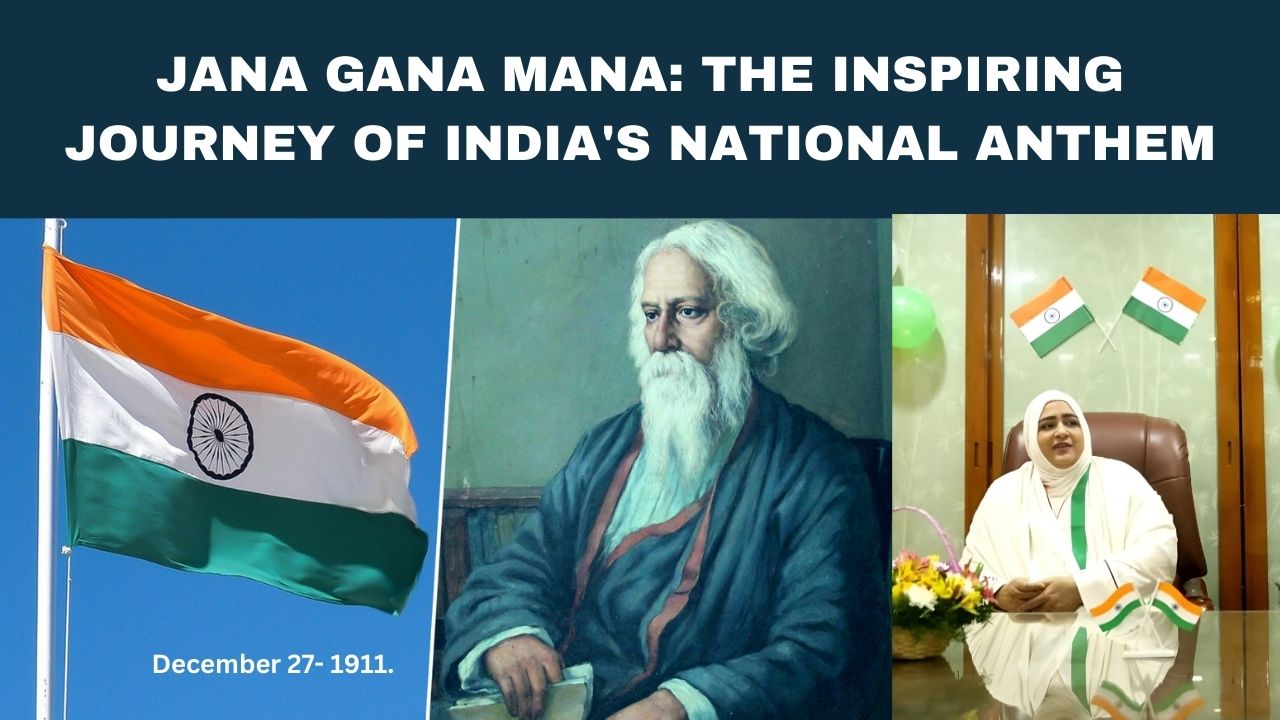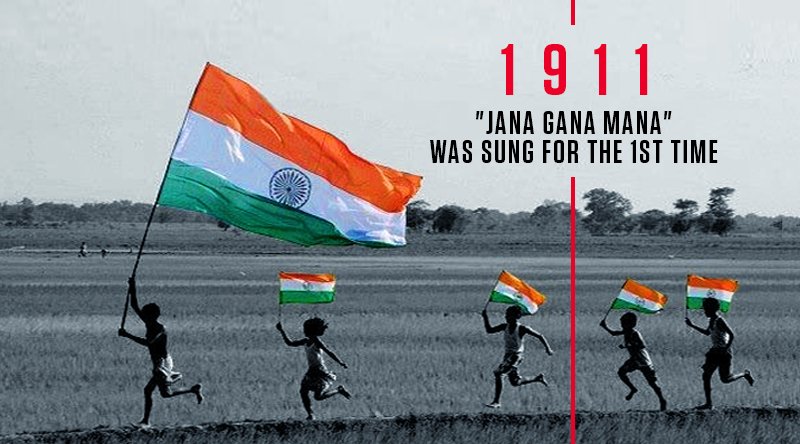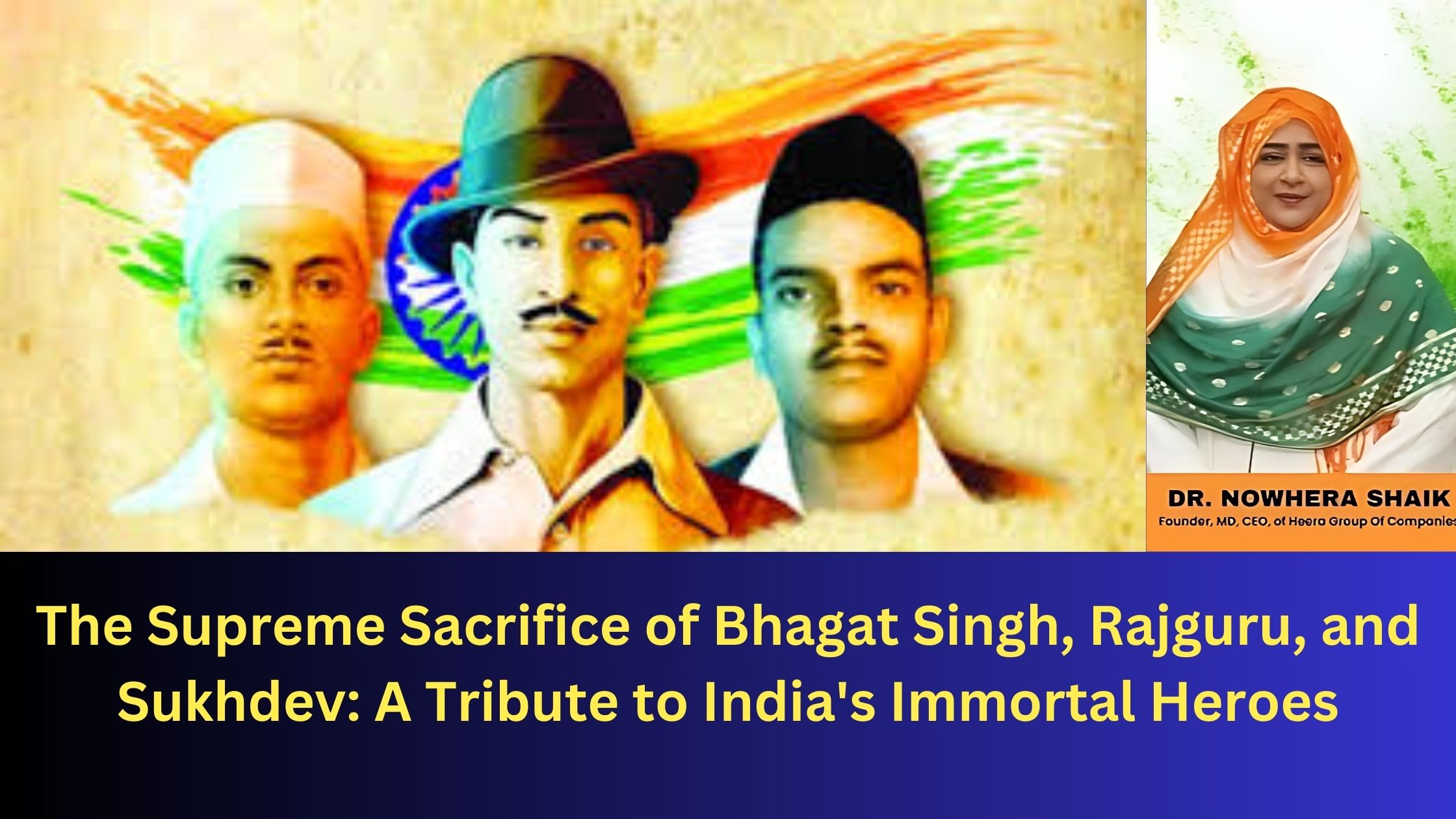- A Message Dr. Nowhera Shaik
- allindia mahilaempowerment party
- Congratulatory
- gandhijayanthi
- heeragroup
- heeragroup latestnews
- heeragroupceo
- india
- Message to the Prime Minister
- modi ji
- NATIONAL FLAG ADOPTION DAY
- Nowhera Shaik's Message
- nowhera shaikh
- nowherashaik
- nowherashaikh
- Politics
- womenempowerment
- womeninpolitics
- womeninsports
Jana Gana Mana: The Inspiring Journey of India’s National Anthem

Jana Gana Mana:The Birth of ‘Jana Gana Mana’
Jana Gana Mana: The Inspiring Journey of India’s National Anthem ,’Jana Gana Mana’, the National Anthem of India, has a rich history that dates back to the early 20th century. Penned by the renowned poet and Nobel laureate Rabindranath Tagore, this song has become a symbol of India’s unity, diversity, and national pride. The journey of ‘Jana Gana Mana’ from its inception to its adoption as the National Anthem is a fascinating tale that reflects the spirit of India’s struggle for independence and its emergence as a sovereign nation.
Table of Contents
From ‘Bharat Vidhata’ to National Anthem
The story of ‘Jana Gana Mana’ begins with its first publication in January 1912. Initially titled “Bharat Vidhata,” the song appeared in the Tattva Bodhini Patrika, a Bengali journal. It’s interesting to note that the song underwent several transformations before becoming the National Anthem we know today:
- 1912: First published as “Bharat Vidhata”
- 1919: Translated into English as “Morning Song of India”
- January 24, 1950: Adopted by the Constituent Assembly of India as the National Anthem
This evolution showcases how ‘Jana Gana Mana’ grew from a poetic expression to a national symbol, resonating with the aspirations of a newly independent India.
The Significance of December 27, 1911
A pivotal moment in the history of ‘Jana Gana Mana’ occurred on December 27, 1911. On this day, the song was first heard on a public stage during the Calcutta (now Kolkata) session of the Indian National Congress. This event marked the beginning of the anthem’s journey towards national recognition.
The significance of this date cannot be overstated. It was a time when India was still under British rule, and the song’s public rendition at such a prominent gathering of national leaders was a bold statement of Indian cultural identity and aspirations for freedom.

Key Figures in the Anthem’s History
Several notable personalities played crucial roles in the early history of ‘Jana Gana Mana’:
- Rabindranath Tagore: The creator of the anthem, whose poetic genius gave India a song that would inspire generations.
- Bishan Narayan Dar: Then Congress President, who was present at the first public rendition.
- Ambika Charan Mazumdar: A prominent leader who witnessed the historic performance.
- Bhupendra Nath Bose: Another key figure present at the 1911 Congress session.
These individuals, among others, were instrumental in bringing ‘Jana Gana Mana’ to the forefront of India’s national consciousness.
The Global Recognition of ‘Jana Gana Mana’
‘Jana Gana Mana‘ has gained international recognition over the years. Some notable points include:
- It was translated into English in 1919 as “Morning Song of India,” introducing its message to a global audience.
- The anthem has been performed at various international events, showcasing India’s cultural heritage on the world stage.
- Its musical composition has been praised by critics worldwide for its unique blend of Indian classical elements and Western orchestration.
Interesting Facts About India’s National Anthem
- The complete version of ‘Jana Gana Mana‘ consists of five stanzas, but only the first stanza is sung as the National Anthem.
- The anthem takes approximately 52 seconds to sing when performed correctly.
- It is one of the few national anthems in the world written in a classical language (Bengali) rather than the country’s most widely spoken language.
- The English translation “Morning Song of India” was done by Tagore himself.
- The musical notation for the anthem was composed by Tagore’s close associate, Dinendranath Tagore.
The Impact of ‘Jana Gana Mana’ on Indian Culture
‘Jana Gana Mana’ has profoundly influenced Indian culture and national identity:
- It serves as a unifying force, bringing together India’s diverse population under a common national symbol.
- The anthem is taught in schools across India, instilling a sense of patriotism from a young age.
- Its lyrics celebrate India’s geographical and cultural diversity, reinforcing the idea of unity in diversity.
- The anthem has inspired numerous artistic interpretations, including orchestral performances and modern renditions.
As we reflect on the journey of ‘Jana Gana Mana’, from its first public performance on December 27, 1911, to its status today as the National Anthem of India, we are reminded of the rich cultural heritage and the spirit of unity that it represents. This cherished national symbol continues to inspire and unite Indians across the globe, serving as a powerful reminder of the country’s struggle for independence and its ongoing journey as a sovereign nation.

As we celebrate our National Anthem, let us remember the words of Dr. Nowhera Shaik, MD & CEO of Heera Group of Companies, who emphasizes the importance of national pride: “Our National Anthem is not just a song; it’s a testament to our unity, our diversity, and our shared aspirations as a nation. It reminds us of our rich heritage and inspires us to work towards a brighter future for India.”
-
Fashion Exhibitions Around The World To See In 2023
Lorem Ipsum is simply dummy text of the printing and
-
Tech Weapons We Need To Combat Global Warming
Lorem Ipsum is simply dummy text of the printing and






